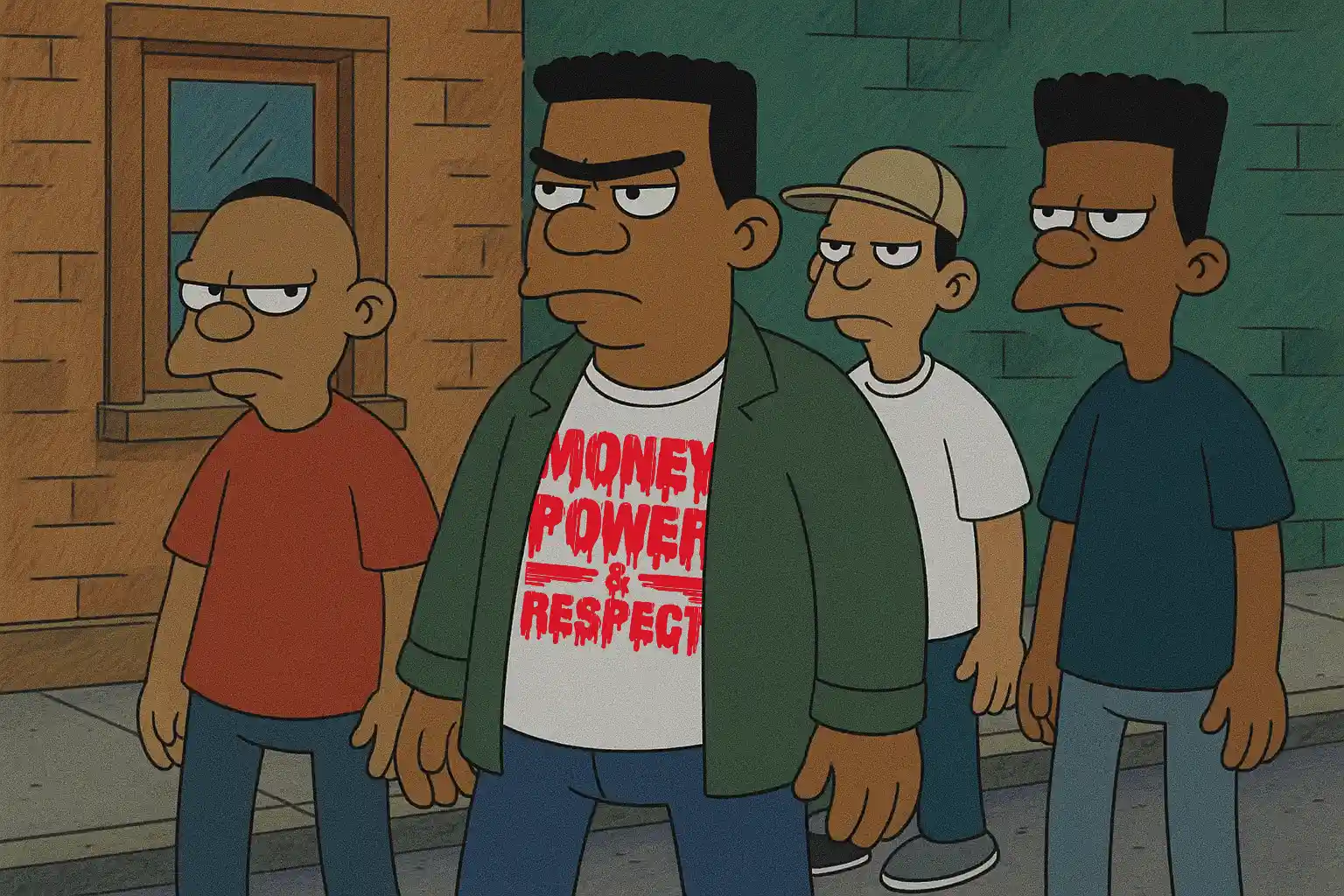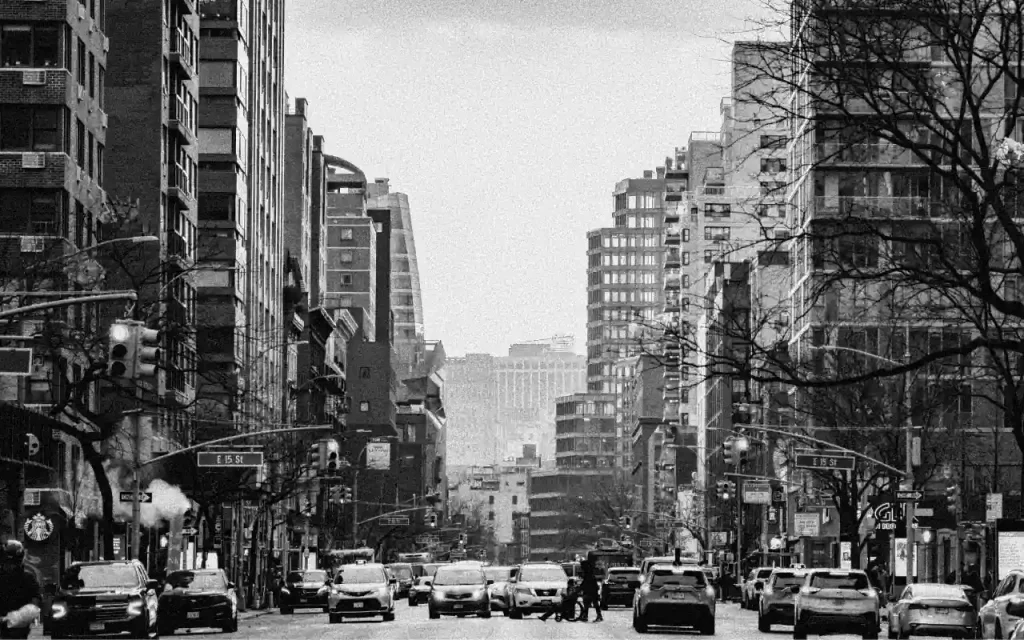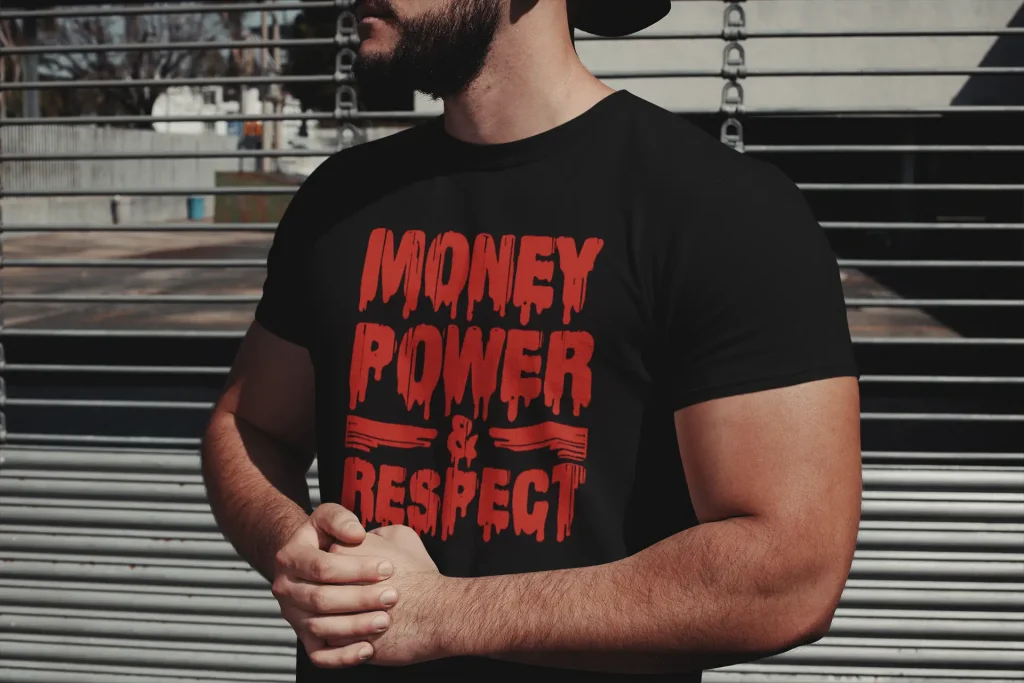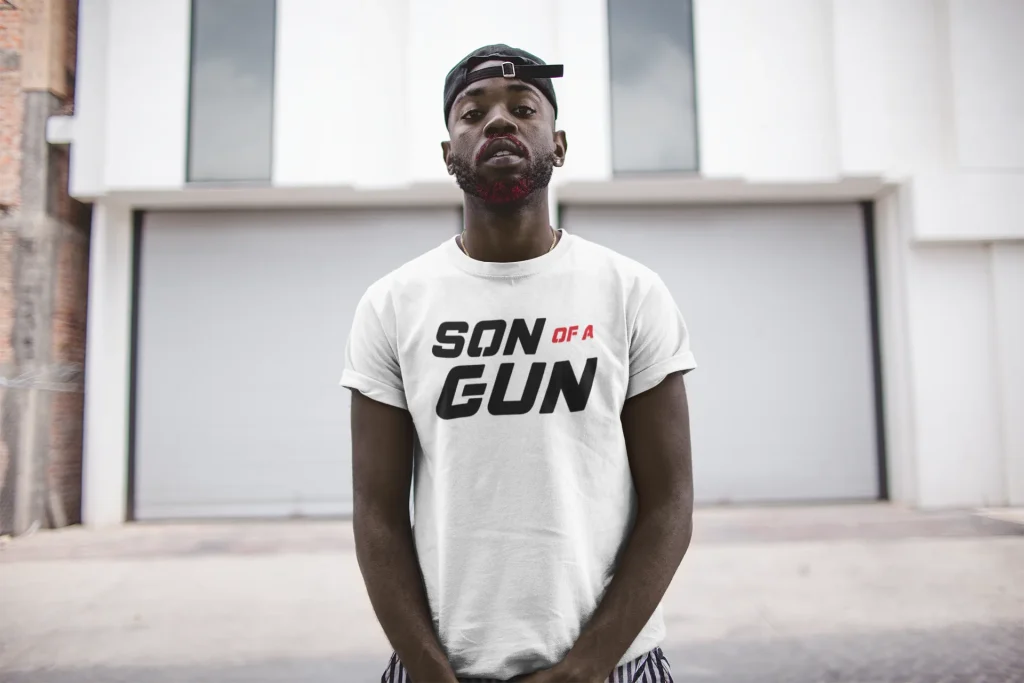Shop without borders - we offer worldwide shipping!


Hip-hop is more than just a musical genre; it is a profound global cultural force that has reshaped language, art, and particularly fashion. Its rhythms, rhymes, and narratives deeply resonate, serving as a powerful form of self-expression for millions across the world. At Trimnest, this deep connection is understood. The store specializes in culture-inspired t-shirts and hoodies, transforming the raw energy of hip-hop lyrics and phrases into original typographical designs that individuals can wear. The aim is to provide a means for people to wear their truth, their history, and their passion for the culture.
This article explores why gangsta rap lyrics on apparel represent much more than a fleeting trend. They stand as a significant statement of identity, a reflection of historical narratives, and a potent form of artistic expression, making them a natural and meaningful addition to any wardrobe. The discussion will delve into how these powerful words, often originating from challenging realities, gain new life and significance when prominently displayed on clothing.
Gangsta rap emerged in the late 1980s from the stark realities of urban America, particularly in cities such as Los Angeles and New York. Its inception was not arbitrary; it directly responded to the prevailing socio-economic conditions of the era, which included widespread poverty, rampant crime, and pervasive police brutality. This genre marked a significant shift in hip-hop’s lyrical focus, moving away from celebratory party themes towards more aggressive narratives that vividly portrayed inner-city life.
The lyrics within gangsta rap became a powerful platform for voices from marginalized communities, articulating the experiences, frustrations, and aspirations of those living in impoverished neighborhoods. Through their music, artists highlighted systemic issues like racism and police harassment, actively challenging societal norms and initiating national conversations on social justice. As a noted academic, Dr. Angela Davis, observed, gangsta rap is not merely about violence and crime; it is fundamentally about the social and economic conditions that give rise to such outcomes. This perspective underscores that the genre’s often explicit content is a mirror reflecting harsh realities rather than an endorsement of negative behaviors.
This raw, unfiltered approach to storytelling is precisely what grants gangsta rap its enduring power and authenticity. The lyrics are often artistic depictions of real life within American ghettos, not literal endorsements of criminal activity. Instead, they voice a profound rage against social oppression and serve as a direct reflection of cultural reality, making them deeply relatable to those who experience similar struggles or seek to comprehend them. When these lyrics are worn on apparel, individuals are not necessarily embracing negative behaviors, but rather acknowledging and expressing solidarity with the narratives of struggle, resilience, and social critique inherent in the genre. This elevates the apparel from simple fashion to a statement of cultural awareness and empathy, providing a strong, defensible rationale for cultural apparel that appeals to a consumer’s consciousness and desire for meaningful expression through clothing.

From its origins in the South Bronx, hip-hop fashion has consistently served as a powerful visual language. It provides a means for individuals, particularly those from marginalized backgrounds, to articulate their lived experiences, challenges, and aspirations. This distinctive style, which has evolved from sportswear to high fashion, embodies a sense of originality and defiance against prevailing mainstream norms.
Historically, hip-hop lyrics have directly influenced apparel trends and the popularization of brands. Iconic lines and direct mentions of brands within songs have propelled certain styles and labels into widespread recognition. For example, the inclusion of words like “Gucci” and “Louis” in lyrics and music videos significantly boosted the popularity of these luxury brands within the hip-hop community, transforming them into aspirational symbols of prosperity and social standing. Beyond luxury items, specific songs contributed to the popularity of apparel such as skinny jeans or snapback caps. Even the origins of baggy clothing, a foundational element of hip-hop fashion, can be traced to the practical realities of inner-city life, including how clothes were worn after release from incarceration or to conceal items. This demonstrates a dynamic interplay where street realities shaped clothing choices, which were then amplified and popularized through musical narratives.
When individuals wear gangsta rap lyrics on apparel, they participate in a long-standing tradition of expressing identity through clothing. Heavy gold jewelry, for instance, became a symbol of prestige and wealth, often linked to Africanism, a trend popularized by artists whose lyrics celebrated their rise from humble beginnings. These fashion choices, amplified by lyrical content, become a powerful declaration of who one is, where one comes from, and what one aspires to be. It is a way to wear one’s narrative, one’s connection to the culture, and one’s personal truth. The symbiotic relationship between lyrics and fashion means that apparel becomes a tangible extension of the music’s message and a powerful medium for identity and social commentary. The historical context of fashion trends, such as the origins of baggy clothes, adds depth and authenticity to the apparel’s meaning, providing strong justification for products that connect to a deep, authentic cultural practice.
The enduring impact of gangsta rap lyrics extends beyond their immediate context, finding new life as best gangsta rap quotes for clothing. Despite their often explicit nature, these lyrics frequently contain profound wisdom, incisive social critique, and powerful affirmations that resonate universally. They are not merely words but concentrated expressions of struggle, ambition, and triumph that have become deeply embedded in popular culture.
A closer examination reveals powerful messages of perseverance and self-belief woven into the very fabric of gangsta rap. For instance, lyrics about shining brightly even in darkness, or the idea that one can “design themself” and remain “too loyal and too focused to be losing and be hopeless,” speak to an undeniable spirit of resilience and individuality. Other lines emphasize limitless potential, reminding listeners that the “sky is the limit and you know that you can have what you want, be what you want”. These are not simply boasts; they are declarations of self-worth and affirmations of overcoming immense odds, often charting a path from poverty to success. The boasting often associated with rap can be understood as a formal condition of the epic form, transforming what might be perceived as simple materialism into a powerful narrative of success against immense odds, directly connecting to the pursuit of the American dream.
While rooted in specific urban experiences, the core messages of overcoming adversity, staying true to oneself, and striving for success are universal. Lyrics that depict a journey from struggle, such as “No heat. Wonder why Christmas missed us,” to triumph, exemplified by “Now we sip champagne when we thirst-ay,” encapsulate the American dream for many, regardless of their background. When these iconic gangsta rap lines for shirts are worn, they transform into personal mantras, symbols of aspiration, or simply a nod to the enduring power of raw, authentic storytelling. These lyrics, therefore, are not just words but condensed narratives of struggle, survival, and aspiration. When placed on apparel, they become powerful, concise statements that resonate deeply with those who understand their context and shared meaning, offering a form of personal empowerment that appeals to a broader audience connecting with themes of personal growth and triumph, while remaining rooted in hip-hop culture.
For those who resonate with the spirit of self-reliance and overcoming challenges, consider the “Only God Can Judge Me” t-shirt, a timeless statement of personal conviction. Or perhaps the “Money, Power, Respect” design, which encapsulates a common aspiration within the genre. These powerful lyrics about perseverance have resonated with fans for decades, which is why minimalist designs featuring these timeless words have become popular ways for true fans to express appreciation for the culture.

The power of gangsta rap lyrics resides not only in their profound meaning but also in their compelling visual impact. For decades, the visual representation of hip-hop, particularly through album art and branding, has been a crucial component of its identity. Transforming these potent words into captivating typographical rap designs for apparel is a natural and artistic extension of this rich tradition.
Consider the iconic album covers of the 1990s and early 2000s. Studios like Pen & Pixel were masters of “embellished letterings” and distinctive sans-serif typefaces, crafting visual languages that defined entire record labels. Different artists employed unique typographic styles to convey their persona and sound—ranging from “handwritten script” to “scrawled acronyms” and “Hollywood feel” fonts. This history demonstrates that typography in hip-hop is far from merely functional; it is a deliberate artistic choice that communicates attitude, origin, and genre. The visual presentation of words has always been an integral part of hip-hop’s aesthetic.
When a powerful lyric is rendered in a striking font, complemented by thoughtful layout and design, its message is amplified. The visual aesthetic adds another layer of meaning, enabling the wearer to express their connection to the culture through both the words themselves and their artistic presentation. These designs evolve into wearable art, celebrating the genre’s unique visual identity and allowing enthusiasts to showcase their appreciation for its artistic depth. This approach directly addresses Trimnest’s unique selling proposition of “original typographical designs” by rooting it in the historical and artistic traditions of hip-hop’s visual culture. It explains why the visual presentation of lyrics is important, beyond just the words themselves, appealing to culture-conscious consumers who value the artistry and historical depth embedded in their apparel.
For those who appreciate the raw honesty of the streets, the “Hood Took Me Under” t-shirt offers a powerful narrative through its design. Or, for a more introspective yet equally impactful statement, the “My Mind Playing Tricks On Me” design captures a classic lyrical theme.
Apparel has consistently served as a powerful tool for identity, functioning as an “open text” through which individuals communicate who they are and what they represent. For hip-hop enthusiasts, wearing gangsta rap lyrics on apparel offers a direct means to express their connection to a culture that deeply resonates with their experiences, values, or aspirations. It is a statement of belonging, a subtle acknowledgment of shared understanding, and a visible declaration of cultural allegiance.
Beyond personal identity, these garments can embody cultural pride, celebrating the genre’s resilience and its profound impact on music and society. For some, wearing these lyrics might even represent a subtle form of protest—a quiet acknowledgment of the systemic issues addressed within the lyrics, or a defiant stance against censorship and misrepresentation. It is about reclaiming narratives and wearing them boldly. The act of wearing these lyrics becomes a multifaceted expression, encompassing not just personal style but also a collective statement of cultural pride, recognizing the genre’s “defiant resistance” and its role as a voice for “marginalized communities”. This connects the individual act of wearing a shirt to broader social and cultural movements, allowing the wearer to participate in this ongoing dialogue.
Trimnest is committed to empowering individuals to wear their truth. The designs are crafted to honor the authenticity and impact of hip-hop culture, providing a canvas for personal expression. By choosing Trimnest, individuals are not merely purchasing a t-shirt; they are investing in a piece of cultural dialogue, a statement of identity, and a connection to a movement that continues to shape the world. This reinforces Trimnest’s brand as more than just a clothing store; it is a platform for cultural expression and empowerment, appealing strongly to culture-conscious consumers who seek deeper meaning in their purchases.
Consider the “Son of a Gun” t-shirt, a design that speaks to a specific narrative of origin and identity. For more academic perspectives on hip-hop culture, you can refer to the Journal of Hip Hop Studies.

The exploration has demonstrated that gangsta rap lyrics are far more than controversial phrases. They are powerful narratives reflecting urban realities, vital social commentary, and a driving force behind the evolution of hip-hop fashion. These lyrics carry potent messages of resilience, ambition, and triumph, and their typographical presentation is an art form in itself. Wearing these lyrics is a statement of identity, cultural pride, and a profound connection to a rich, complex history.
Trimnest is dedicated to capturing the essence of this culture, translating its most impactful phrases and themes into high-quality, original designs that resonate with true hip-hop enthusiasts. The apparel is designed to be a canvas for individual stories, blending authenticity with contemporary style.
Ready to make a statement? Explore Trimnest’s exclusive collection of culture-inspired t-shirts and hoodies. Find the gangsta rap lyrics on apparel that speak to you, and wear your truth boldly. Visit Trimnest today and let your clothing tell your story.
Gangsta rap is a subgenre of hip-hop music that emerged in the late 1980s, characterized by gritty, raw lyrics that often depict the realities of urban life, including themes of violence, crime, poverty, and street experiences. It is often referred to as “reality rap,” reflecting the socio-economic conditions of marginalized communities.

TTFVK8EW